Applied Physics
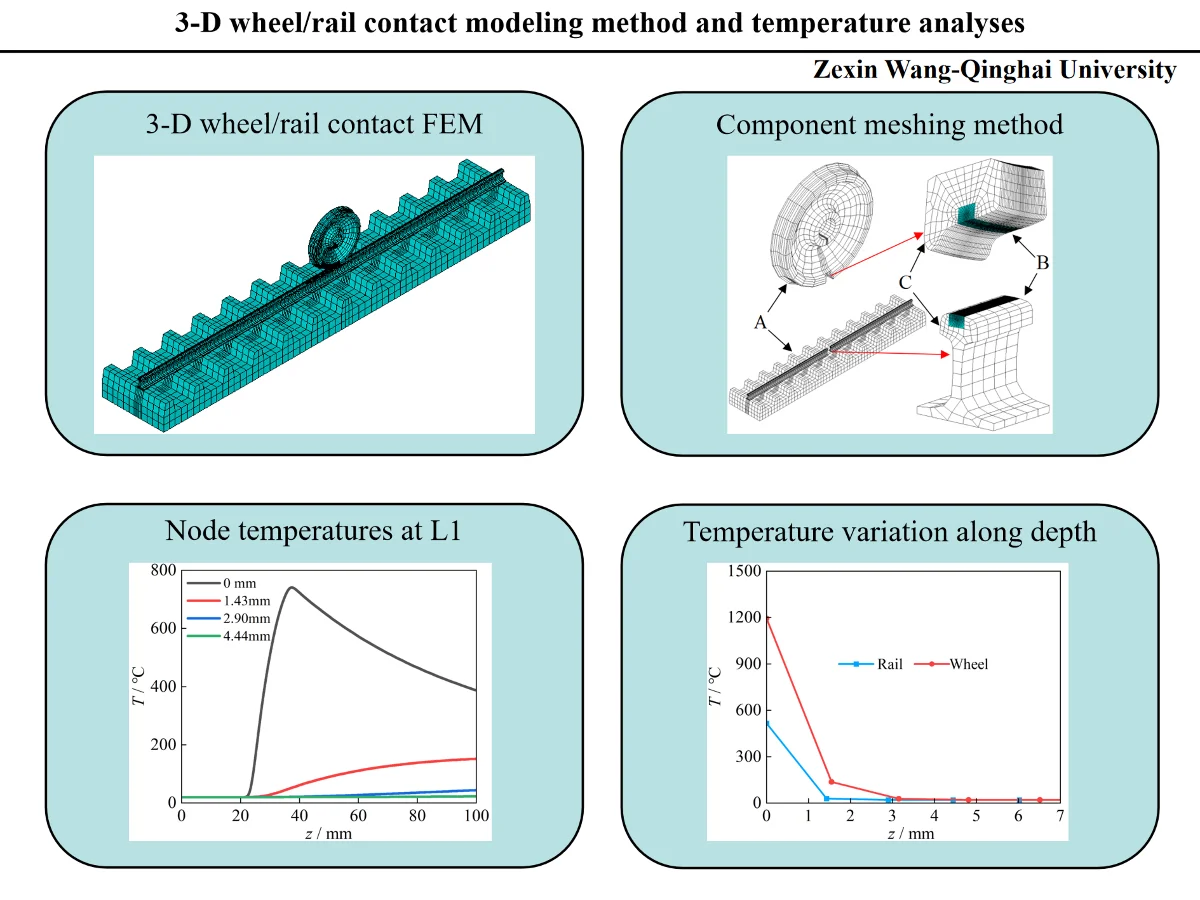
Editor's pick
Research Article
3-D wheel/rail contact modeling method and temperature analyses
By Zexin Wang, Tao Yang, Yunpeng Wei
According to the wheel/rail actual dimensions, the modeling process of a 3-D full-size wheel/rail sliding contact finite element model is introduced in detail. During modeling process, the partitioning strategy method and MPC method are adopted. The temperature characteristics of the contact region during sliding contact are researched. The research results show the contact patch shape is close to an ellipse. The stress in the contact area is very concentrated, and the maximum von Mises stress appears in the subsurface at a distance of 2 mm from the contact interface. During the sliding contact, the maximum temperature appears at the contact center. The temperature on wheel contact surface ascends continuously and is significantly greater than the rail surface temperature. High temperatures of contact region are mainly distributed in the contact surface and subsurface, and the influence depth of temperature does not exceed 3 mm.
May 5, 2025
Applied Physics
Most cited
Research Article
A conversion guide: solar irradiance and lux illuminance
By Peter R. Michael, Danvers E. Johnston, Wilfrido Moreno
December 4, 2020
Applied Physics
Most cited
Research Article
A portable breast cancer detection system based on smartphone with infrared camera
By Jian Ma, Pengchao Shang, Chen Lu, Safa Meraghni, Khaled Benaggoune, Juan Zuluaga, Noureddine Zerhouni, Christine Devalland, Zeina Al Masry
September 26, 2019
Biomechanics
Most cited
Research Article
Experimental kinematic analysis of an intermittent motion planetary mechanism with elliptical gears
By Alexander Prikhodko
September 30, 2020
Applied Physics
Most cited
Research Article
Experimental analysis of cutting force during machining difficult to cut materials under dry, mineral oil, and TiO2 nano-lubricant
By I. P. Okokpujie, L. K. Tartibu
December 13, 2021
Applied Physics
Journal of Vibroengineering
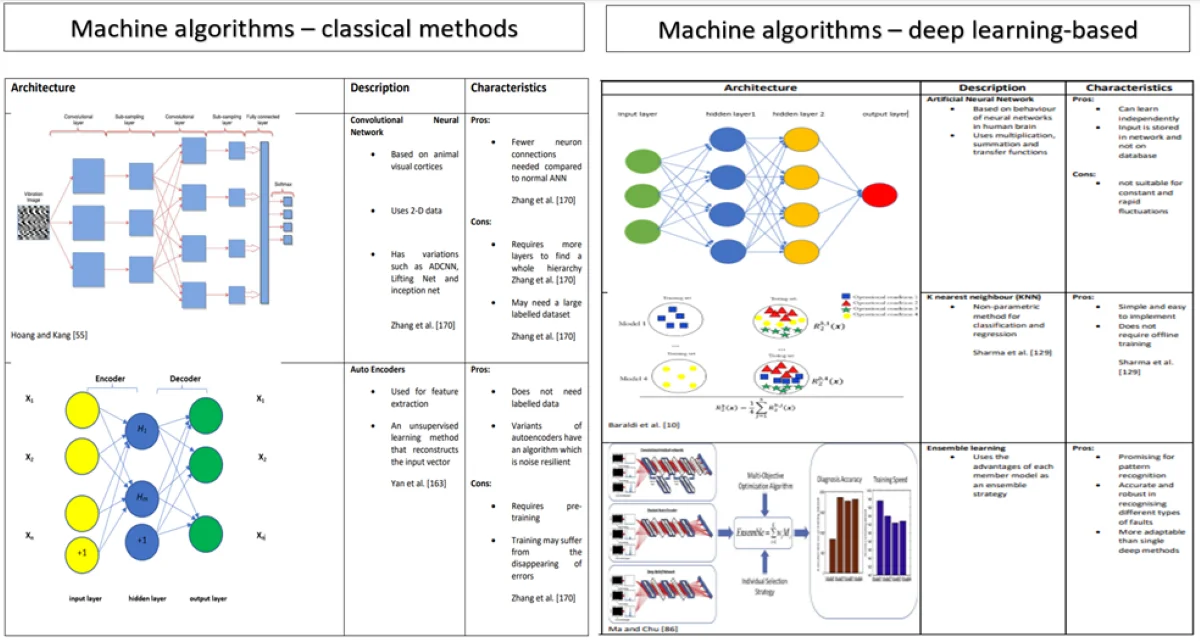
Research Article
Fault diagnosis and health management of bearings in rotating equipment based on vibration analysis – a review
There is an ever-increasing need to optimise bearing lifetime and maintenance cost through detecting faults at earlier stages. This can be achieved through improving diagnosis and prognosis of bearing faults to better determine bearing remaining useful life (RUL). Until now there has been limited research into the prognosis of bearing life in rotating machines. Towards the development of improved approaches to prognosis of bearing faults a review of fault diagnosis and health management systems research is presented. Traditional time and frequency domain extraction techniques together with machine learning algorithms, both traditional and deep learning, are considered as novel approaches for the development of new prognosis techniques. Different approaches make use of the advantages of each technique while overcoming the disadvantages towards the development of intelligent systems to determine the RUL of bearings. The review shows that while there are numerous approaches to diagnosis and prognosis, they are suitable for certain cases or are domain specific and cannot be generalised.
November 26, 2021
Applied Mathematics
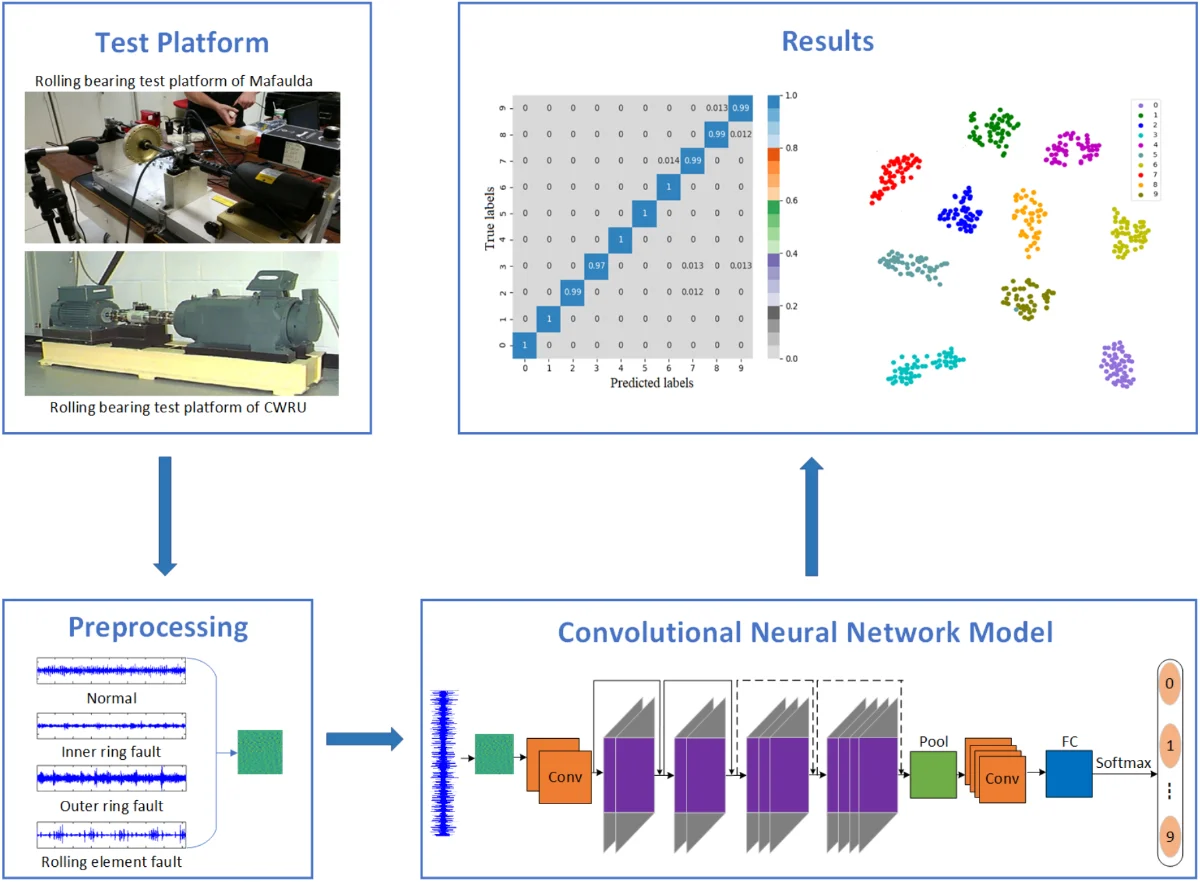
Research Article
A convolutional neural network method based on Adam optimizer with power-exponential learning rate for bearing fault diagnosis
The extraction of early fault features from time-series data is very crucial for convolutional neural networks (CNNs) in bearing fault diagnosis. To address this problem, a CNN framework based on identity mapping and Adam optimizer is presented for learning temporal dependencies and extracting fault features. The introduction of four identity mappings allows the deep layers to directly learn the data from the shallow layers, which alleviates the gradient disappearance problem caused by the increase of network depth. A new Adam optimizer with power-exponential learning rate is proposed to control the iteration direction and step size of CNN method, which solves the problems of local minima, overshoot or oscillation caused by the fixed values of the learning rates during the updating of network parameters. Compared to existed methods, the identification accuracy of the proposed method outperformed that of other methods for bearing fault diagnosis.
June 30, 2022
Applied Mathematics
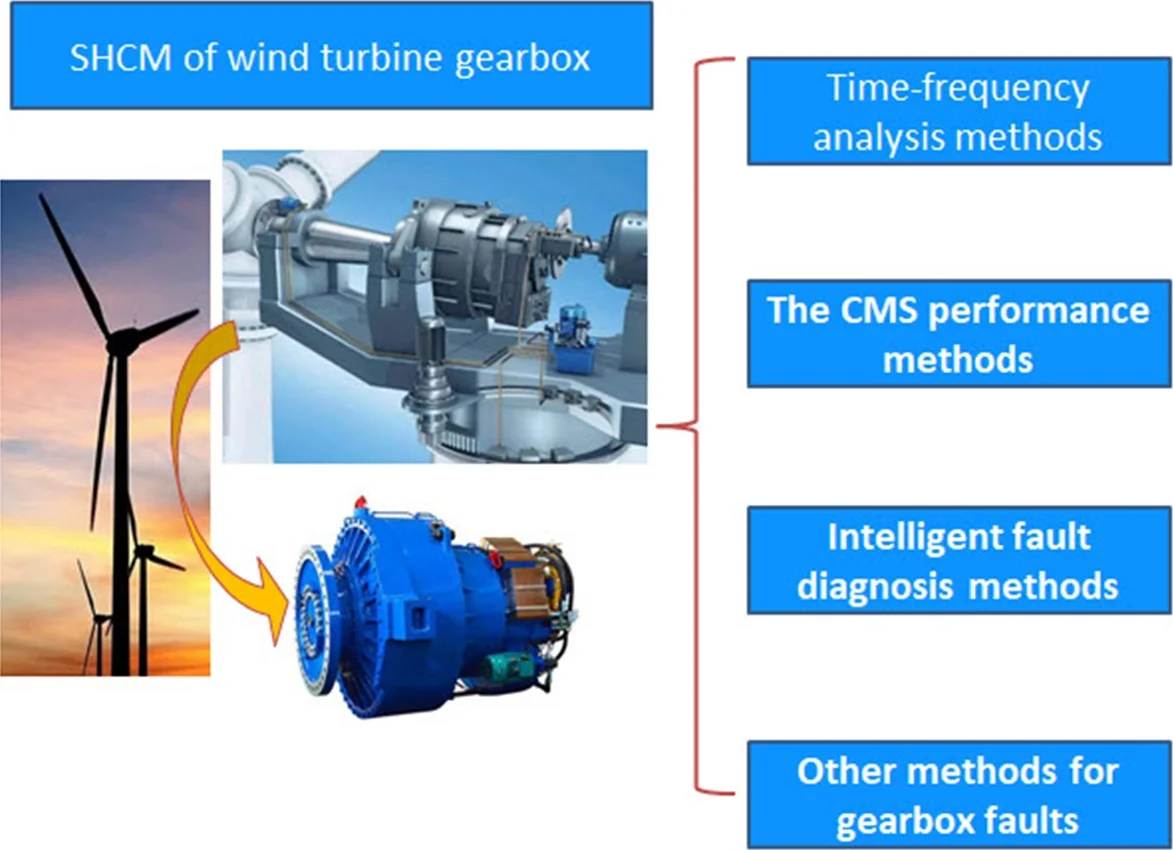
Research Article
A review on wind turbines gearbox fault diagnosis methods
As an renewable and clean energy of the world, wind energy has gained more and more attention and its fault diagnosis becomes more and more important. The gearbox, as the kernel component of the wind turbine system, it’s robust conditions have a great influence on the whole wind turbines system. Wind turbine gearbox has complex structure, which is usually composed of solar planetary gearbox and cylindrical gearbox. In the process of operation, various kinds of faults easily occur, resulting in serious losses. Once the wind turbine gearbox is not functioning as smoothly as it could be, it may result in large economic losses for the company and owner. At the same time, the failure rate of wind turbine gearbox has always been high because of complicated mechanic structure and special motion. Therefore, the tasks of reducing the downtime and increasing the productivity of wind turbine gearbox are urgent. This paper reviewed some research results of faults diagnosis on wind turbines gearbox, such as time-frequency analysis method, vibration based methods, nondestructive testing methods, etc. Meanwhile, this paper finds out some key problems and the channel of the resolution of the issue in order to supply some information for the further research of wind turbines gearbox.
January 27, 2021
Applied Mathematics
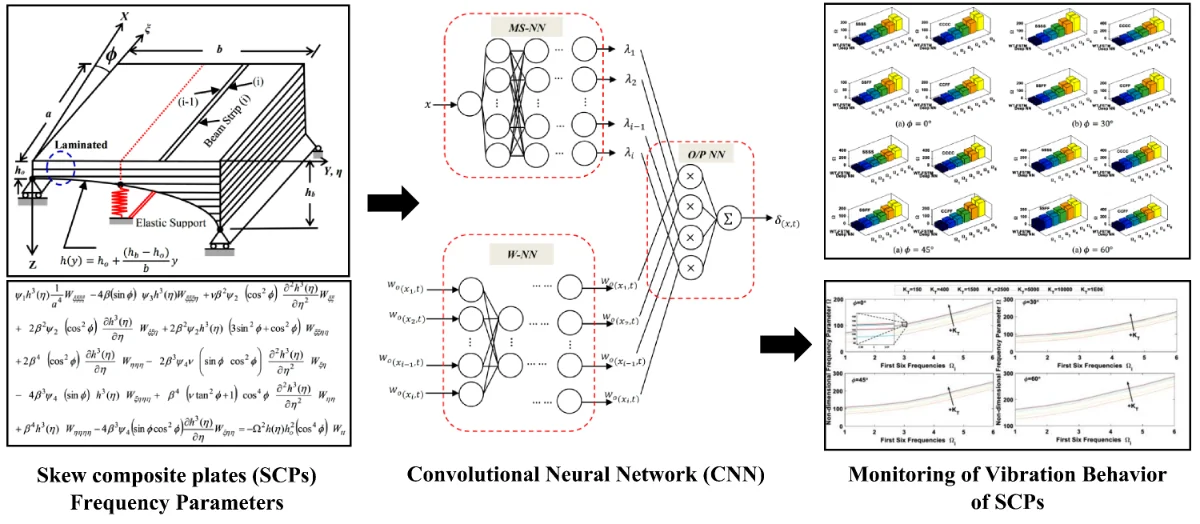
Research Article
Applying deep learning and wavelet transform for predicting the vibration behavior in variable thickness skew composite plates with intermediate elastic support
In this paper, the vibration behavior features are extracted from the combination between Wavelet Transform (WT), and Finite Strip Transition Matrix (FSTM) of skew composite plates (SCPs), with variable thickness, and intermediate elastic support. Although, the results of this technique and based on the previous work done by the authors, that show the method can reflect the vibration behavior of the composite plates. Due to the method's difficulty in terms of, a lot of calculations with a large number of iterations these results may not be good choices for quick and accurate vibration behavior extracting. Thus, the new deep neural network (NN) is designed to learn and test these results carrying out by extracting vibration behavior features that reflect the important and essential information about the mode shapes in SCP. The results give high indications about the proposed technique of deep learning is a promising method, particularly when the type structures are complicated and the ambient environment is variable.
February 6, 2021
Vibration Engineering
Journal of Vibroengineering
<p>Comprehensive platform for advancements in the field of vibration engineering</p>
Journal Impact Factor (JIF)
0.9
CiteScore
1.9
APC
1050 EUR
Best of Theme
Most cited
Research article
November 28, 2019
Dynamic pressure on lock gate structure coupled with fluid
By Deepak Kumar Singh, Priyaranjan Pal, Shashi Kant Duggal
Most cited
Research article
June 29, 2021
Green and sustainable membrane fabrication development
By Alaa Mohamed, Samy Yousef
Most cited
Research article
September 26, 2019
Study of CO2 emissions from energy consumption in Spanish hospitals
By Justo García-Sanz-Calcedo
Most cited
Research article
November 26, 2021
Overview of environmental airflow energy harvesting technology based on piezoelectric effect
By Huajie Zou, Fuhai Cai, Jianghua Zhang, Zhenyu Chu
You might also like
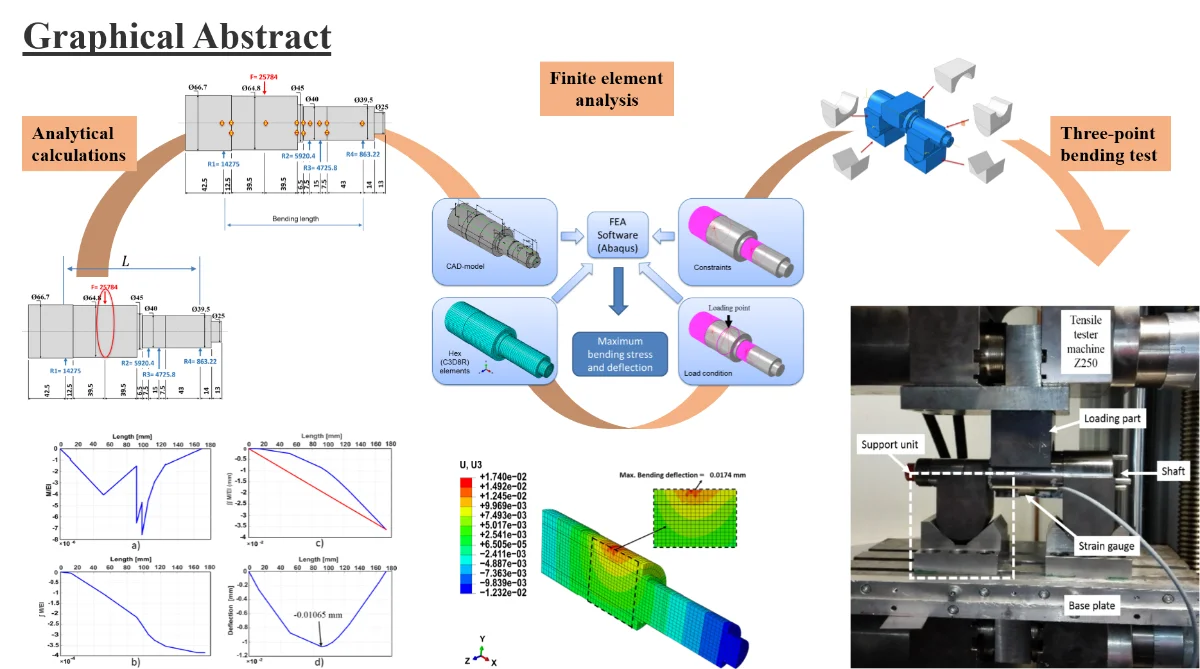
Most downloaded
Research Article
FE analysis and experimental determination of a shaft deflection under three-point loading
By Bernd Engel, Sara Salman Hassan Al-maeeni
Increasing industrial demand for new products including advanced production technology leads to substantial natural resources consumption. Furthermore, huge environmental pollution and emerging environmental legislation motivate the machine tools industry as one of the major resource consumers on a global scale to develop methods for more sustainable use of the Earth's resources. Machine tools re-engineering concerning design and failure analysis is an approach by which outdated machines are upgraded and restored to like-new machines. To evaluate the mechanical failure of the used machine components and to ensure their reliable future performance, it is essential to make material, design, and surface investigations. In this paper, an experimental approach based on the principle of a three-point bending test is presented to evaluate the shaft elastic behavior under loading. Moreover, finite element analysis and numerical integration method are used to determine the maximum linear deflection and bending stress of the shaft. Subsequently, a comparison between the results is made. In conclusion, it was found that the measured bending deflection and stress were well close to the admissible design values. Therefore, the shaft can be used again in the second life cycle. However, based on previous surface tests conducted, the shaft surface needs re-carburizing and refining treatments to ensure the reliable performance of the surface.
September 24, 2018
Applied Physics
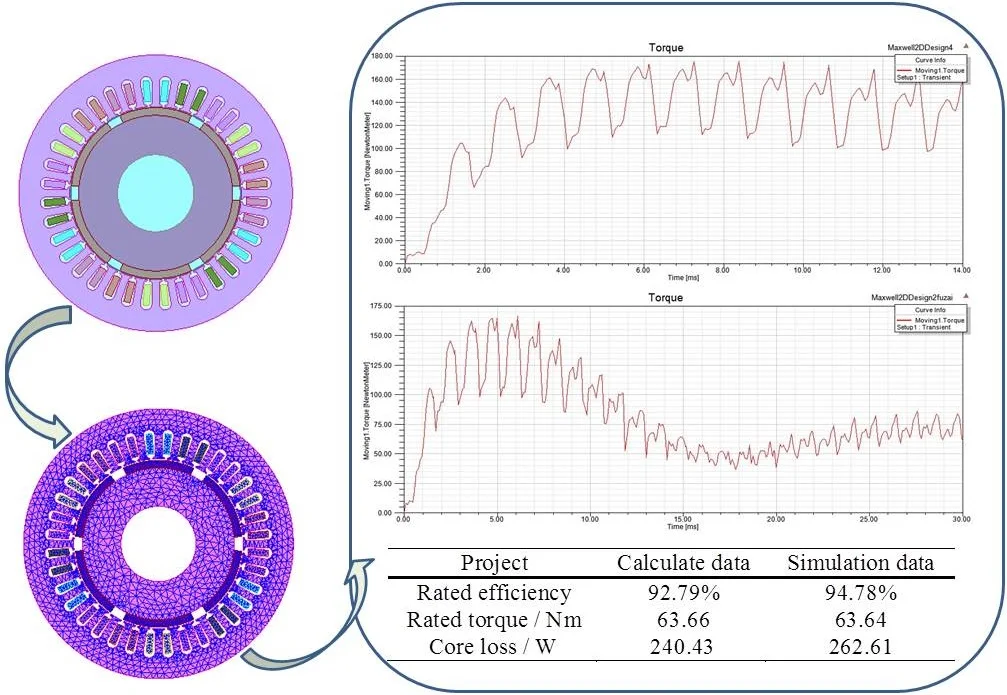
Most downloaded
Research Article
Design and analysis of driving motor system for hybrid electric vehicle
By Qiping Chen, Jiacheng Wei, Fanhong Zeng, Qiang Xiao, Hui Chen
In order to improve the reliability and stability of hybrid electric vehicle driving motor system, according to the performance parameters of the hybrid electric vehicle, the driving motor system is designed and analyzed for the hybrid electric vehicle. Based on the performance parameters of the hybrid electric vehicle, the power parameters of the permanent magnet synchronous motor (PMSM) are calculated and determined, then the parameters of the stator core, the permanent magnet and the rotor core are designed and calculated, as well as other main characteristic parameters of the driving motor system are calculated. The model of a PMSM is established and simulated by ANSOFT Maxwell according to the obtained motor parameters, and then the steady state and transient state of the driving motor are simulated in different working points, and the electromagnetic and performance curves are combined to determine the overall performance requirements of the driving motor, which can be used to match the hybrid electric vehicle. The simulation results show that the designed PMSM can be used to match the hybrid electric vehicle and meet the performance requirements of the vehicle. The final simulation analysis results are in good agreement with the theoretical calculation results, which indicates that this method can be used to afford a theoretical basis to reduce the cogging torque and optimize the in-wheel motor of electric vehicle in the future.
March 31, 2020
Computer Science
Stiffness and vibration isolation characteristics of a torsional isolator with negative stiffness structure
This paper proposes a novel design torsional vibration isolator with negative stiffness structures. It consists of two shafts that are linked by positive springs and negative stiffness structures. The connection position of the two shafts has been designed into disc structure, which is the installation position of the positive springs and negative stiffness structures. The task of positive springs is to transmit the designed torque. In this paper, the nonlinear stiffness characteristics of the isolator are presented. The nonlinear mathematical model is presented, and its dynamic behaviors are investigated using the averaging method, and compared with that of the corresponding linear torsion isolator without negative stiffness structures. The study shows that the torsion isolator has a wider isolation region than that of the linear isolator. Furthermore, the performance of the isolator is sensitive to the damping of the system and the amplitude of vibration excitation. Choosing a suitable damping and vibration environment will be important for the stable application of this isolator.
Error correction and uncertainty measurement of short-open-load calibration standards on a new concept of software defined instrumentation for microwave network analysis
Software-Defined Radio (SDR) has appeared as a sufficient framework for the development and testing of the measurement systems such as a signal generator, signal analyzer, and network analysis used in the network analyzer. However, most of researchers or scientists still rely on commercial analyzers were larger benchtop instruments, highly cost investment and minimum software intervention. In this paper, a new concepts measurement revolution called as Software Defined Instrumentation (SDI) on network analysis is presented, which is based on reconfigurable SDR, a low-cost implementation, ability to access RF chain and utilizing open source signal processing framework. As a result, a Vector Network Analyzer (VNA) has been successful implemented by deploying an SDR platform, test sets, and data acquisition from the GNU Radio software in host PC. The known calibration process on SHORT-OPEN-LOAD (SOL) technique is validated to ensure measurement data from this SDI free from systematic error. Two types of SOL calibration standards used for a comparison study to validate the SDI measurement system which is capable of generating the response on the differential of standard quality and accuracy of standards kits. Finally, calibration uncertainty analysis is also presented in this work by utilizing RF open source package without any cost addition.